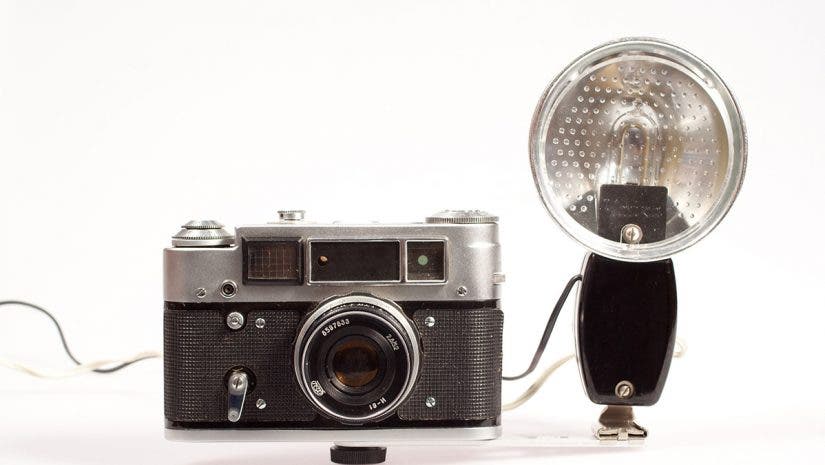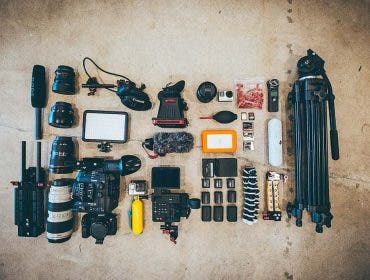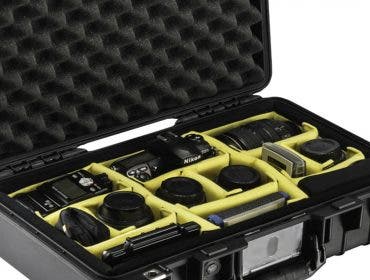A bare-tube flash is just like any other flash–except that it has no reflector behind the flash tube. It sends light relatively evenly in all directions (except directly down).
Since the light isn’t blocked in any direction, it bounces around, reflecting off walls and ceilings, filling in harsh shadows and creating more natural light.
Bare-tube flash is a simple affair, consisting of a “naked” flash bulb. You can make a bare-tube flash act like a standard reflector flash by attaching specially designed or homemade-reflectors. With or without reflectors, bare-bulb flash has been popular since the days when flashbulbs were the universal kind of flash illumination. The combination of direct illumination from the flash source and ample fill from the reflected spill light can provide lighting of a very special quality. Just be careful not to place the flash in front of the camera, where the unshielded light could strike the camera lens.
![]()
![]()
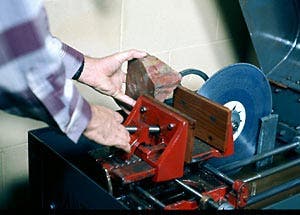
Flash, undressed: This is a good example of a photograph taken with bare-tube flash. Notice that there are shadows and catch-lights. The flash gives the scene modeling and life, but no undesirable black shadows without detail.
![]()
![]()
The difference is in the light
The direct light from the reflectorless flash tube is crisp and contrasty, due to the comparatively small size of the source. But it bounces around a room, and so while a quarter of the light illuminates your subject, the other three-quarters of the light is spill light, which goes out in all directions. In small or medium-sized rooms, this light bounces off the walls and ceiling and produces lots of shadow-softening fill light.
![]()
![]()
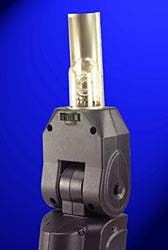 Bare flash remixed!
Bare flash remixed!
The Quantum T5Dr is a modern bare-tube flash. How modern? It’s compatible with I-TTL equipped digital SLRs–a far cry from single-use flashbulbs. It is seen here with the optional Bare Bulb Enhancer accessory reflector. Quantum’s new QTTL system wirelessly links Qflash 5d series flashes to digital and film cameras.
Flash exposure indicators on four sides blink for visual confirmation that the flash is OK, under or over exposed, or did not fire. Audible indicators can also be turned on, off, or listened to with an earphone. In Auto and Auto Fill modes, exposure results are displayed on the LCD. Any amount of under- or over-exposure is also displayed as a guide to fine tuning exposure
Quantum’s QTTL system works with all popular TTL systems. Wireless TTL is available via adapters for Canon, Nikon, Olympus, Hasselblad, Mamiya, and Contax cameras. Add a FreeXwire FW9T Transmitter and Quantum’s Adapters will send commands to one or more remote FreeXwire receivers connected to Qflashes. FW8R connects to Qflash for wireless TTL.The flash delivers 150 wattseconds of flash power (versus 50 ws typically for shoe mount flashes.)
Available accessory reflectors: Bare Bulb Enhancer, Telephoto, Wide Angle Diffuser, Soft Box and Snoot.
![]()
![]()
The bare tube indoors
A bare-tube flash is almost always used either handheld off-camera or mounted on a light stand. Larger units are generally powered by auxiliary battery packs. It can used both alone or in combination with other flashes–often other bare tubes.
You don’t have to be careful about aiming a bare-tube flash. An equal amount of light is emitted from all sides.
If you’re planning to photograph in a small room, you can have the flash on or near the camera. You can also mount a bare tube on a light stand in the middle of the room. But, once again, be sure the flash is not in front of the camera where its light can strike the lens, causing flare.
You can put a photoelectric slave on the bare tube and a small flash on your camera. The main purpose of the small flash is to trigger the photoelectric slave on your bare-tube unit. It should contribute little to the film exposure.
The spill light may pick up some colors from the reflective surroundings, such as colorful painted walls, which may give an undesirable color bias to color photographs. To lessen this effect, you can fashion a reflector card from white cardboard or even a Styrofoam cup and attach it behind the flash tube with tape or rubber bands. This can help bounce some of the spill forward instead of allowing it to bounce off a colored surface.
![]()
![]()
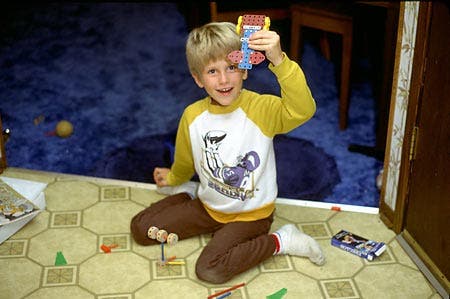
Very filling: Here’s another example using light from the white walls and ceiling for fill. Note the light-toned shadows.
![]()
![]()
Because bare-tube flashes send light in all directions, you can use them with all kinds of camera lenses. Unlike standard flash units, bare bulb flash covers 180 degrees. So, wide-angle lenses work well with these flashes. Even fisheye lenses can be used effectively with bare-tube lighting. With lenses having a very wide angle of view, you can expect to see some flare, because the flash itself is likely to show in the photograph. Use this to your advantage! Incorporate the flare into your compositions for dramatic effect. Digital camera LCD monitors can come in very handy here.
Determining exposure
Indoors or out, light from a bare-tube flash follows the inverse square law. Simply divide the guide number by the flash-to-subject distance to get the aperture setting to use. However, a bare-tube flash is particularly affected by its surroundings. It is, therefore, advisable to run tests to see how the guide number is affected by the brightness and proximity of those surroundings. A flash meter is useful in this situation. So is a histogram on a digital camera.
If you are using an autoexposure flash, just follow the manufacturer’s instructions.
The bare tube outdoors
Because of the absence of reflective surfaces, bare tubes lose a lot of efficiency outdoors and give contrasty lighting. Your outdoor guide number will be about two exposure steps less than the indoor number for an eight-foot ceiling.
You can avoid much of this efficiency loss by attaching a suitable reflector–an old seven-inch press-camera flash reflector is ideal–or one made for your bare bulb flash. This will, essentially, convert it into a conventional flash unit. The reflector will raise your outdoor guide number by about two exposure steps.
![]()
![]()

Be my slave: The Morris AC Bare Bulb Slave features a U-shaped flash tube firing into a diffused dome for broad coverage. Because of the unit’s small size, the output still has fairly high contrast, and is best for lighting backgrounds for environmental portraits. Specially designed to deliver even light to the widest area, the Bare Bulb Slave also makes an excellent general coverage light. When used for portraiture, it delivers a slightly softer light than the other ACs. It’s a great tool for photographing interior architecture–use it to replace standard household light bulbs.
Like the other ACs it is triggered by your main flash unit through a built-in slave sensor. It has a guide number of 26 with ISO 100 film and recycles in five seconds.
- 22 w/s of power
- GN 26 (ISO 100, ft.) 180-degree flash coverage
- Open flash button
- Green power on lamp, red ready lamp
![]()
![]()
Light naturally
AC-powered bare tube slaves add a more natural look to indoor lighting. For instance, if you have a table lamp that is turned off in the picture, it looks funny. It’s like something is missing. If you turn the lamp on, the lamp’s color balance will be way off.To overcome these problems I use the Morris AC bare bulb slave. It screws into any standard size lamp socket in place of the regular bulb. When you take the shot with your on-camera flash, the slave goes off, too–giving the effect of the lamp being lit.
Since the Morris slave is a little over 3.25″ in diameter, you’ll need a lamp that has a reasonably wide harp for it to fit. It’s usually not very difficult to temporarily change harps to accommodate the slave. If you don’t have a spare harp you can put a dab of sticky stationary putty on top of the slave and press the lampshade’s support onto the putty for a temporary mount.
Be adventuresome! Give an old tool a new try.
![]()
![]()

See the light Do you see the distinctive wash of light on the wall and substantial lightening of the man’s little shadow when using a Morris slave in the light fixture (right)? With the slave shut off (left), the light is harsher, and the lamp just looks out of place.
![]()
![]()
